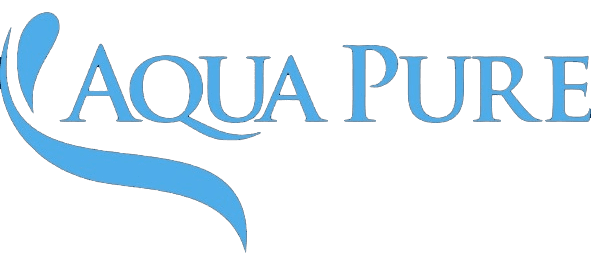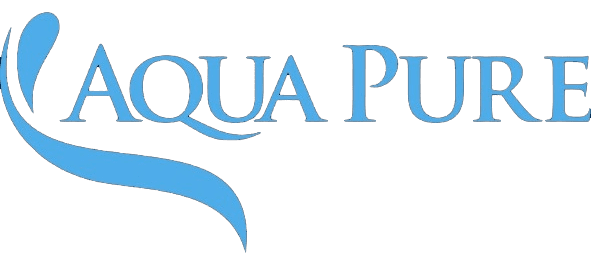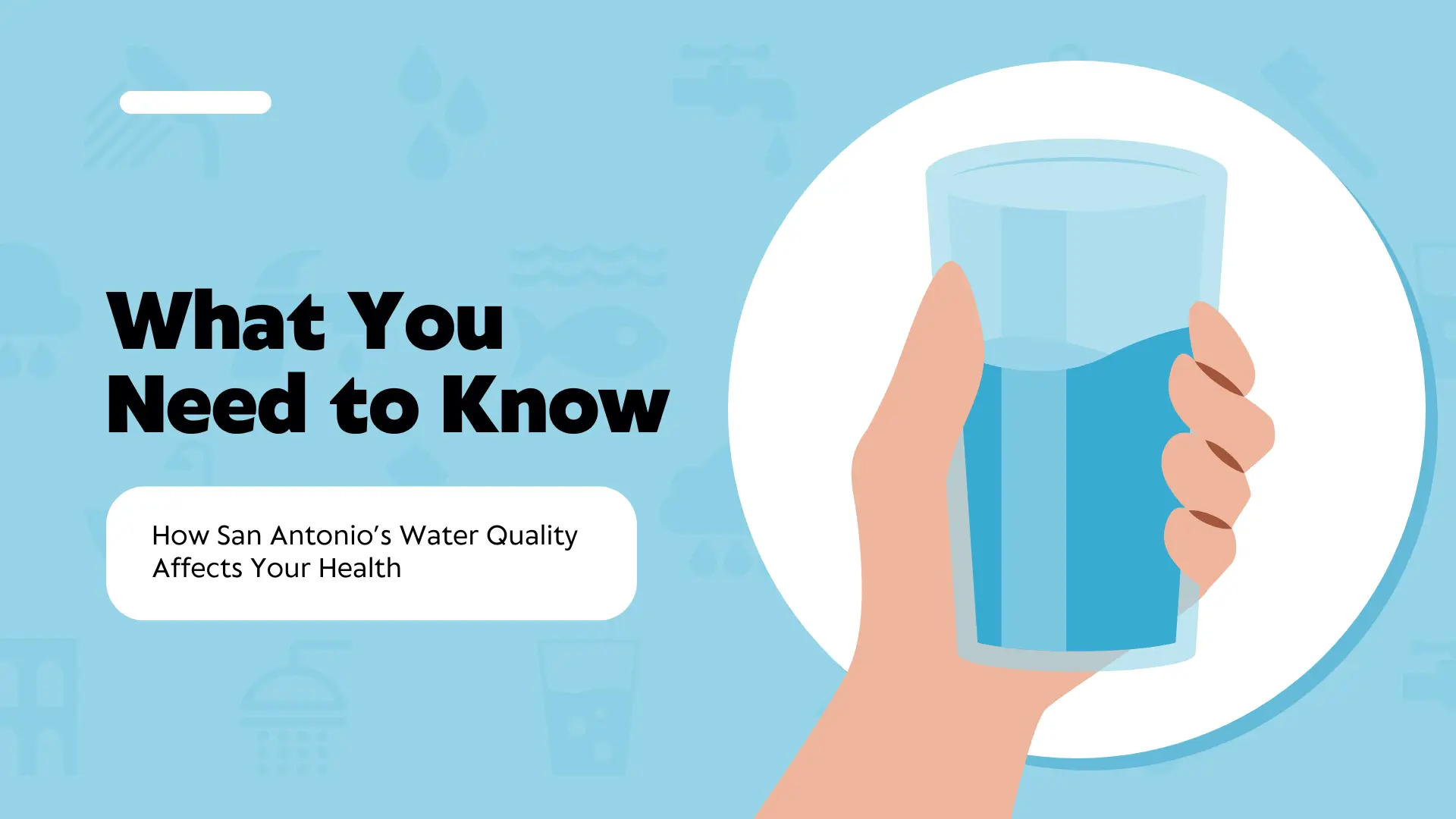San Antonio is blessed with abundant groundwater, primarily from the Edwards Aquifer. That geology also gives our tap water some quirks—especially hardness—that affect your home, your appliances, and in certain cases, your health. This friendly deep-dive explains what’s typically in San Antonio’s water, what it means for your family, and the smartest ways to test and improve your water without overspending.
What’s in San Antonio’s water?
1) Hardness (calcium & magnesium)
Our water here at San Antonio is famously very hard, due to the limestone-rich aquifers feeding the city. “Very hard” usually means over 10.5 grains per gallon (GPG); San Antonio commonly lands in the mid-teens to around 15–20 GPG by many local accounts and reporting—enough to leave scale on glassware, fixtures, and inside water-using appliances. Hardness isn’t a direct health hazard, but it’s tough on plumbing, heaters, and anything that heats or sprays water almost all kind of water appliances at home gets effected by the Hard Water.
Why it matters at home: Scale builds on heating elements and in pipes, reducing efficiency and shortening equipment life (think: water heaters, dishwashers, humidifiers). Soap and detergent also work less effectively in hard water, so you use more and still get residue.
2) Disinfectant (chlorine)
SAWS (San Antonio Water System) use a chlorine residual to keep water safe from microbes across the distribution system. In the most recent Consumer Confidence Report (CCR), SAWS reports meeting federal standards for microbial safety—no E. coli positives were found in 2024. Chlorine protects health, but it can create taste/odor issues and contribute to disinfection by-products like total trihalomethanes (TTHMs) and haloacetic acids (HAA5). SAWS’ water quality report indicates compliance with federal limits.
What you might notice at the tap: A swimming-pool smell or slightly medicinal taste, especially after hydrant flushing or if water sits in pipes. That’s aesthetic—not typically a health risk at the levels used—but many residents prefer to reduce it for better taste.
3) Fluoride
Fluoride occurs naturally in local groundwater. SAWS adjusts fluoride to ~0.7 mg/L—the level recommended in the U.S. to help prevent tooth decay—except in areas (like some Trinity Aquifer sources) that are already near the target. This remains a local policy decision and is reported transparently by SAWS.
4) PFAS (“forever chemicals”)
In April 2024 the EPA finalized the first national drinking water standards for PFAS, including enforceable limits for PFOA, PFOS, and a hazard-index approach for certain mixtures. Utilities have three years to complete initial monitoring (by 2027) and five years to implement solutions if needed. SAWS has been monitoring; a 2024 local report noted PFAS detections in one Castle Hills well below the new federal limits, with system blending further lowering levels delivered to customers. Expect continued testing and updates as EPA timelines progress.
Health context: Certain PFAS have been linked (at elevated, long-term exposures) to developmental, immune, and some cancer risks. The new rule is designed to reduce those risks over time; many households also choose point-of-use filtration for added peace of mind.
How these factors affect your health and home
- Taste & Odor (chlorine): Not a health issue at typical municipal levels, but a frequent reason residents add carbon filtration for better taste and to reduce by-products.
- Skin & Hair (hard water): Hardness can leave mineral film that makes skin feel dry and hair dull; it also reduces soap lathering. That’s more comfort and cosmetic than clinical, but a quality-of-life concern for many families.
- Appliances & Plumbing (hardness): Scale reduces water-heater efficiency and shortens the life of dishwashers, coffee makers, tankless heaters, and ice makers. A softening or anti-scale strategy often pays for itself in reduced energy use and maintenance.
- PFAS (health): If detected near or above new EPA limits, utilities must act; some households may opt for certified filters now to further reduce PFAS at the tap.
The smartest way to test your water in San Antonio
- Read the SAWS Consumer Confidence Report (CCR). It summarizes regulated testing and results system-wide and confirms compliance (e.g., microbial safety, disinfectant use, by-products, and more). Great baseline for city water users.
- Consider a home test for your specific tap. Houses differ (older plumbing, premise plumbing, private well connections, point-of-use systems). A targeted lab test can check what you care about (e.g., hardness, chlorine, copper/lead from home plumbing, PFAS). If you’d like help choosing the right scope, you can request a free water test or quote and we’ll visit you at your home with no-obligations at your door steps.
- Match treatment to your actual results. Don’t buy gear you don’t need. For example, softeners won’t remove chlorine or PFAS; carbon won’t soften; RO will, but you may not need whole-home RO. Let our professionals guide you about the best filtration options for your house.
Practical improvement options (without overbuying)
Below are common, evidence-based options that map to San Antonio’s most typical concerns. When shopping, look for NSF/ANSI certifications that match the problem you’re solving (see the cheat sheet below).
- A) Better taste, odor & chlorine/TTHM reduction (drinking water)
- Activated carbon (POU pitcher, faucet, under-sink): Look for NSF/ANSI 42 (aesthetic chlorine/taste/odor) and NSF/ANSI 53 for health-related reductions (some models also reduce certain disinfection by-products and heavy metals). Carbon is inexpensive and easy to maintain.
- B) PFAS reduction (drinking water)
- Certified carbon or reverse osmosis at the sink: Choose filters certified for PFAS reduction under NSF/ANSI 53 or NSF/ANSI 58 (RO). EPA maintains guidance and links to certified products. Many homeowners combine a carbon stage with RO for broad performance.
- C) Hardness/scale control (whole-home)
- Traditional salt-based water softener (ion exchange): The gold standard for preventing scale and delivering “soft” water feel. Look for NSF/ANSI 44 for ion-exchange softeners. You’ll add salt periodically; modern systems are efficient and can be set to your incoming hardness.
- Conditioners/“salt-free” anti-scale systems: These don’t soften (they don’t remove hardness minerals), but can reduce scale adhesion. They’re lower maintenance and preserve mineral content, but results vary by chemistry and expectations. Good fit when you want less scale and minimal upkeep. (Certifications and test methods vary; ask for third-party data that matches your water.)
- D) Microbial safety (special use)
Municipal water is disinfected, but for specific cases (e.g., immune-compromised households, medical needs, or after main breaks/boil notices) you can add absolute 1-micron filters, UV, or RO. Look for NSF/ANSI 53 or 58 for cyst reduction/removal if microbes are a concern.
NSF/ANSI certification cheat sheet (what to look for on the box)
- NSF/ANSI 42: Improves taste/odor; reduces chlorine (aesthetic).
- NSF/ANSI 53: Health-related reductions (e.g., lead, some VOCs, cysts; some products include PFAS claims).
- NSF/ANSI 58: Reverse osmosis systems (broad reduction, including PFAS).
- NSF/ANSI 44: Water softeners (ion exchange).
- NSF/ANSI 401: “Emerging contaminants” not yet widely regulated (varies by filter).
Putting it together: sensible setups for San Antonio homes
- Budget-friendly upgrade: Under-sink or faucet-mount carbon filter for drinking/cooking + keep an eye on cartridges (change on time). Adds great taste and knocks down chlorine/odors. Pair with a filtered fridge for ice.
- PFAS peace of mind: Under-sink RO (NSF/ANSI 58) or a carbon system with PFAS certification (NSF/ANSI 53) at the kitchen sink for water you drink and cook with.
- Whole-home comfort & appliance protection: Salt-based softener sized to your hardness and household usage. Expect clearer glassware, less soap needed, better water-heater efficiency, and fewer scale service calls.
Want a pro to evaluate your specific setup? Explore Water Filtrations and Water Softeners, or Request A Free Water Test/Quote and we’ll recommend exactly what you need (and nothing you don’t).
Local Concerns:
Q1: Is San Antonio tap water safe to drink?
Q2: Why is my water so “chalky” or leaving white spots?
Q3: Does our water have PFAS?
Q4: Is the chlorine taste normal?
Q5: Do we add fluoride here?
Q6: What’s the right hardness setting for a softener in San Antonio?
Q7: Should I get whole-home RO?
Final word
San Antonio’s water is reliable and well-monitored—but its hardness and chlorine taste are real everyday annoyances, and PFAS is an evolving regulatory area worth watching. The smartest path is simple: read the CCR, test your tap, and match treatment to your results. If you want help with an unbiased plan, explore Water Filtration and Water Softeners—or Request A Free Water Test/Quote and we’ll tailor options to your home, health priorities, and budget.



